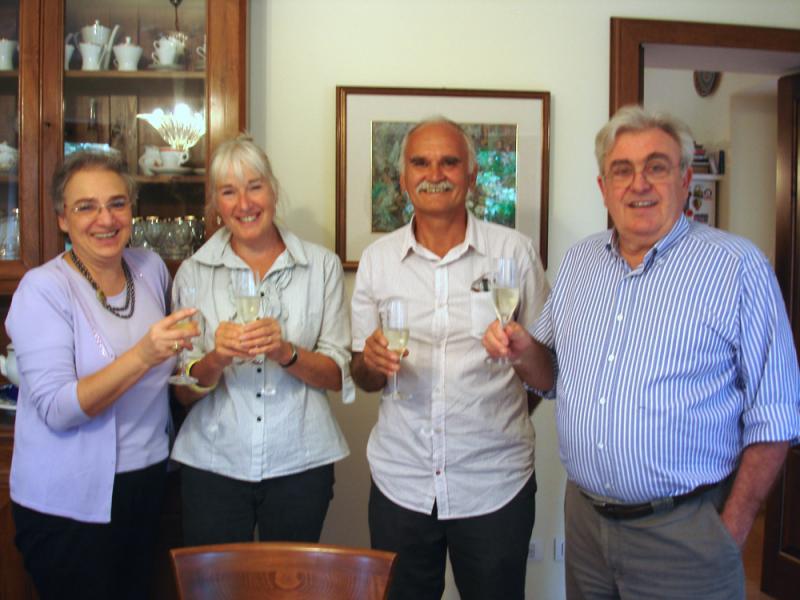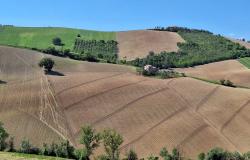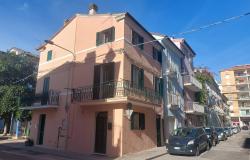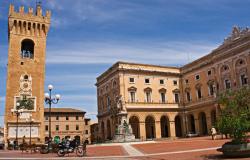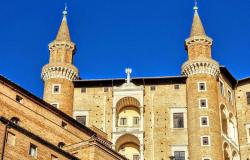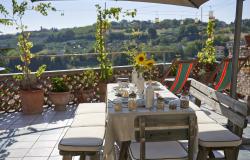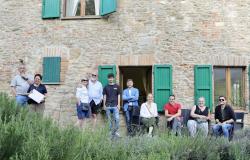[Photo: Maurice Petch, second from right, with his wife Angela next to him, with members of his family in Italy he had never met before.]
Italy Magazine’s ‘Back to Your Italian Roots’ series continues today with the story of Maurice Petch, who is half Italian, half English. His father, a captain in the British Eighth Army during World War II in Italy, met his then 18-year-old mother in late 1944, while attending a dance in Urbino “neither of them were meant to attend,” Maurice recounts. They married in 1947 in Padova and moved to Peterborough, where Maurice was born, their second child.
Maurice was already familiar with his ancestral town of Urbino when he began tracing his Italian roots, having spent every summer there as a child and returning almost every year as an adult. His research has led him to locate the main branch of his family, the Micheli, back to the mid-19th century. "The wonderful part of this was hearing the stories of my ancestors," Maurice wrote in an email to me. Interestingly enough, after buying a property about an hour and half from Urbino, Maurice met a family of Micheli there and he now intends to find out if they are in any way connected to his family.
Maurice, what prompted you to begin your search to trace your Italian roots?
My grandfather, Luigi Micheli, died on 26th January 1990. With my mother, I returned to Urbino to help organise his affairs. While there, I met numerous relatives, many of whom I had rarely seen. When people tried to explain who they were (for example grandchildren of my great great uncle), I became so confused that, while talking to them round the kitchen table, started, with their help, to draw up a simple tree. (I still have it, dated 3rd Feb 1990.) Because I had distant and fond memories of my great grandmother and because I was hearing some lovely stories about various members of my family, I decided not only to expand the tree, but to collect some of these stories.
 [Maurice's parents in 1947.]
[Maurice's parents in 1947.]
Please describe the process. Who or what was/were your first resource(s) when you started your search?
I already knew Urbino and my close relatives as my father had promised his father-in-law that he would bring their daughter back each year, so, as a child every summer, I spent three to six weeks in Urbino. All of the information I gathered, over a few years after my grandfather’s death, was by word of mouth (or email!). By far the bulk of the information came from relatives in Urbino. The remainder came from contacting more distant relatives.
The process comprised using a free online family tree maker (in my case Family Echo) to enter the raw data and draw up a tree. In fact, three trees, as I had one for the male lineage, one for my grandmother’s side and another for my great grandmother’s side. Having done these, I prepared three A5 lever arch files to record the details, photos and stories of each family member.
What were the obstacles, if any, during the process of finding your relatives and then getting in touch?
There have been two main obstacles. The first was contacting relatives whose ancestors had left Urbino. Some I managed to contact by online searches, but one branch who went to work in southern France before the war could not be found. Another branch, a cousin of my mother’s, had moved to Perugia. I knew her daughter was a lawyer so managed to trace her online and tried to contact her. When I received no replies, I travelled to Perugia to introduce myself but, unfortunately, she refused to open the door to me. It’s the only example of someone not engaging enthusiastically in the process.
A second obstacle remains: having identified all members of the descendants of my great great- grandparents (born 1850) and having discovered that there are some Michelis living very close to our summer home in the Tuscan Apennines (we bought a water mill there nearly twenty years ago), I wanted to establish whether I have relatives near our new home. It may be that either my mother’s family originated from the very hills where we now live for much of the year. Although the “anagrafe” (registry office) have good records dating post-unification of Italy, for dates prior to then, you need to access parish records. Knowing which parish to approach and obtaining their cooperation in making their records available is far more difficult.

[Maurice's close family, from left at back: grandfather Luigi, grandmother Teresa, mother Giuseppina, great aunt Elda, mother's cousins Marcello and Umberto. Front: great grandmother Francesca and aunt Silvana.]
Please describe the moment when you first met your Italian relatives. How did you feel?
I have known my close Italian relatives since childhood. However, meeting new, albeit more distant, members of the family has been great fun. We have been invited to dinners to meet a whole branch of the family I’d not known before and they have really enjoyed being given the enlarged tree and hearing some of the stories I’d obtained.
Did you discover any amazing story during the process of searching for your Italian relatives?
There are two which come immediately to mind. The first concerns my great grandfather. I had known his wife (she died when I was thirteen), but he died in 1917 at the age of forty-five. I knew he was a “maniscalco” (farrier) but learnt that he was exceptionally skilled and won a prize in Rome. When clearing my grandfather’s garage, I found a plastic bag with some strange horseshoes, some with hinges, others with bolts. Having shown them to a number of present day experts, it appears they are either orthopaedic or “carriage” shoes which were adjustable to almost any horse to replace a lost shoe (equivalent to a spare tyre, but for any size wheel). Although called “carriage” shoes in England, in rural Italy I suspect they were used by the “butteri”, cowboys who accompanied the sheep and cattle on the annual transhumance. Everyone declared the workmanship as exceptional and that they were museum pieces. They are now my most treasured possession.
The second story relates to a cousin of my grandfather (but similar age to my mother) whose mother died giving birth to her. The difficult birth left her lame. She was brought up by her childless Uncle and Aunt who treated her very badly. She corresponded with a colleague of her father who was now working in Sicily. Without ever meeting this “pen pal” and to escape the unhappiness at home she married him “di procura”, by proxy. He then took her to Northern France where he was to work in the mines, but was an uncaring man who also treated her very badly. “Luckily”, her husband died quite young and she was then able to lead a normal, happy life.
 [Maurice as a child with his grandmother.]
[Maurice as a child with his grandmother.]
Ultimately, what has the experience of reconnecting to your Italian roots meant to you?
As an English child, I was always struck by the close family bonds that exist in Italy and was very proud that I was a part of it, albeit on the fringes. It also led me to ask more questions of my mother and her experiences both as a child in Italy and coming to England as a war bride without speaking English. This in turn encouraged my wife, Angela, who spent many of her formative years in Rome, daughter of an English civil servant working for the Commonwealth War Graves Commission, to write her first book, “Tuscan Roots,” a story about the English daughter of an English soldier and Italian mother trying to discover her roots, which captured many of the stories my mother told us, as well as some of the social history of the Tuscan Apennines, where we now spend much of the year. She has since researched the transumanza for her second book, “Now and Then in Tuscany, ”and one of her characters is a maniscalco, inspired by my relative. Both books are available on Amazon.
The A5 folders will also remain with our three children who, while loving Italy, do not have the same connection with Urbino, but nonetheless are very interested and proud of their ancestry.

[Maurice's mill in the Tuscan Apennines, near Badia Tedalda, north of Sansepolcro.]
